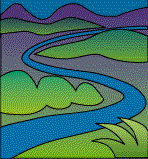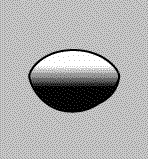 |
|
Close the window to return to the unit. CERAMICS |
|
|
Ceramics represent some of the oldest and most useful art objects in the world. Even in very early societies, as soon as man stopped roaming and stayed in one place to farm, new necessities would arise. Every culture has needs for vessels and containers. Many have been used simply, to store food or carry water. Others have been embellished and decorated, with changes to their surface or their shape. The animation to the left symbolizes progressive change in the use of clay. |
| Some containers may have had important roles in the rituals or the religion of the local community. All over the world, ceramics have been found near gravesites, leaving art historians to wonder their significance and meanings to the people who once lived there. |
|
One
reason that ceramics have been created by so many people throughout
the years is that the source material is easily found in many
places.
|
 Use the"reload" or "refresh" button on your browser to restart the animation. |
Clay for ceramics is often carried downstream and deposited on the banks by river waters. There are locations throughout the world where the natural soil types contain special deposits of clay which can be shaped easily into useful forms. Under the right conditions, the clay will dry to become a hard and useful vessel. The animation to the left symbolizes rivers carrying clay downstream and depositing it on the bank. |
| Long ago, people learned through experimentation, through trial and error, which clays worked the best. They found out that the clay would become even more durable if it were subjected to higher temperatures, and the bowl-makers of the past began to "fire" the clay by baking it in a special kind of oven. |
Today, most of
the useful ceramic ware that we use
is one of three main types:
|
Earthenware
and Porcelain are seen in the Grandeur of Viceregal Mexico.
All three of these types can be found in the Bayou Bend Collection. |
|
An
outline of ceramic topics is also presented in Table
form.
|
